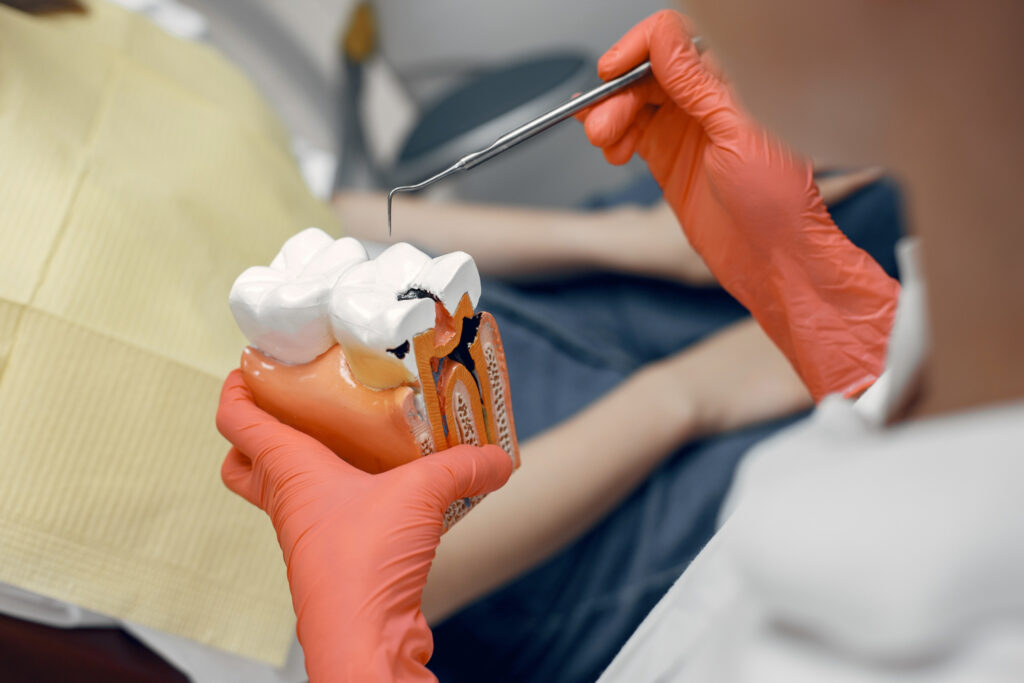If you’ve just been told you need a root canal treatment, your mind is probably racing with some questions—Will it hurt? How long will recovery take? And most importantly… can I drive myself home afterward?
Well…last month I actually had to go through a root canal myself, and I’ll admit, I was a bit nervous about whether I’d be in any condition to operate my truck afterward.
But here’s the good news: I drove myself home just fine!
In this article, I’ll share my personal experience along with some insights I gained from my dentist, and key findings from my research on whether it’s safe to drive after a root canal.
My Root Canal Experience: Was I Okay to Drive?
The Lead-Up to the Procedure
A chronic throbbing toothache had been ruining my day-to-day work for nearly a year, and 2 months back, my dentist eventually confirmed that I needed a root canal in order to fix my pain permanently and was given a date for the procedure.
My first thought? “Great, now I’ll be groggy and need someone to chauffeur me around.”
But my dentist assured me that unlike wisdom teeth removal or oral surgery, a root canal is different.
During the Procedure
The numbing shots kicked in quickly, and the procedure itself was smooth and painless. The endodontist used some local anesthesia (not sedation), so I was fully awake and aware the whole time.
Post-Procedure: How I Felt
Once it was over, my mouth was still numb, but my mind was clear. No dizziness, no drowsiness—just a slight weird feeling from the numbness.
I sat for a few minutes, got the all-clear from the dentist, and was able to walk out to my vehicle without a problem.
The Drive Home
I’ll admit, I was cautious. First, I tested my reflexes (braking suddenly in an empty parking lot) and made sure I could focus:)
Since I wasn’t given sedation, also known as general anesthesia, I did not have major complaints and felt completely capable of driving.
But here’s the key: Not everyone’s experience is the same.
Medical Perspective: When Is It Safe to Drive After a Root Canal?
According to the American Association of Endodontists, most patients can drive after a root canal if only local anesthesia is used. However, there are exceptions,
1. Local Anesthesia vs. Sedation
- Local anesthesia (most common): Numbs only the tooth area so you remain fully alert. Driving is usually fine.
- Oral sedation (e.g., Valium, laughing gas): Can cause drowsiness, hence, you should NOT drive.
- IV sedation (rare for root canals): Impairs motor skills. Absolutely no driving for 24 hours.
My case was straightforward—just local anesthesia—so I was cleared to drive.
2. Your Pain Tolerance & Reaction to Anesthesia
Some people feel lightheaded or anxious after dental work. If you’re someone who gets shaky or faint, play it safe and arrange a ride.

3. Post-Procedure Pain Medication
If your dentist prescribes strong painkillers (like opioids), those can impair driving. But commonly prescribed over-the-counter ibuprofen is generally considered safe when you drive.
When Should You NOT Drive After a Root Canal?
Even if you think you’re fine, avoid driving if:
- Your mouth is still extremely numb (could affect focus).
- You were given sedation (even mild anti-anxiety meds).
- You feel dizzy or fatigued afterward.
- You’re in severe pain (distraction = risk).
Pro Tip: If unsure, call your dentist before leaving the clinic.
My Recovery Tips for Driving (& Healing) Comfortably
Since I drove myself, I took extra precautions:
- Waited 30 minutes as my dentist requested to ensure no sudden dizziness.
- Drank water, avoided straws (prevent dry socket).
- Chewed carefully (stuck to soft foods).
- Kept pain relievers handy (just in case).
Final Verdict: Can I Drive After a Root Canal?
In most cases—yes, but if only local anesthesia was used for the procedure. If sedation or strong meds are involved, better to play it safe and get a ride.
My experience was smooth, but everyone reacts differently, hence, you should listen to your body and your dentist’s advice.
Have you had a root canal? Did you drive afterward? Share your story in the comments!
FAQs
Q: How long after a root canal can I drive?
A: If only local anesthesia was used, you can usually drive after 30 mins. With sedation, you should wait 24 hours.
Q: Can laughing gas affect driving after a root canal?
A: Yes! Nitrous oxide (laughing gas) can impair reflexes. Arrange a ride.
Q: What’s the best pain reliever after a root canal if I need to drive?
A: Stick to ibuprofen or acetaminophen unless your dentist advises otherwise.
References
- American Association of Endodontists (AAE) – “Root Canal Safety and Recovery”
- Mayo Clinic – “Root Canal: What to Expect”
- Journal of Endodontics – “Patient Recovery Patterns After Root Canal Therapy” (2021)
- American Dental Association (ADA) – “Anesthesia and Driving: Dental Procedures”
- National Highway Traffic Safety Administration (NHTSA) – “Medications and Driving Safety”
